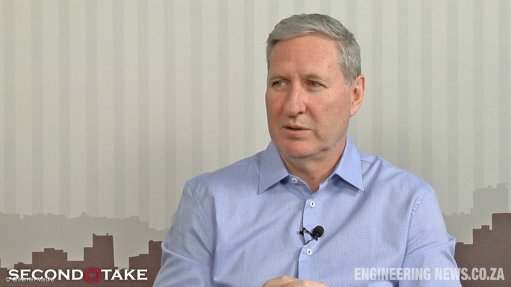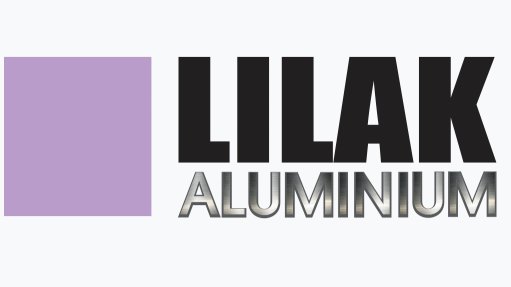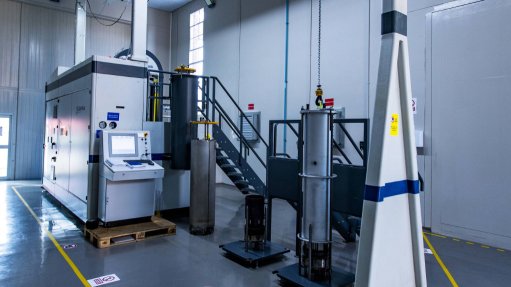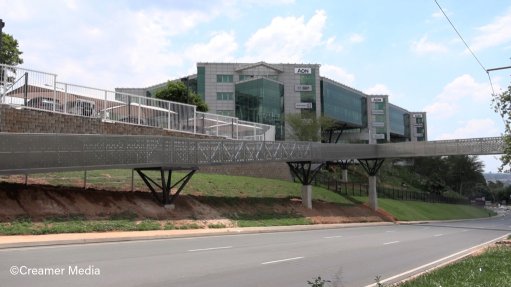Alternative building technology the way to go for quicker housing delivery

Human Settlements Minister Thembisile Simelane, and other housing experts discuss importance of embracing alternative building technology
As Gauteng’s housing backlog continues to widen beyond the current 1.2-million units and amid lacking security of tender, which impacts on economic empowerment and employment, human settlements experts have called for more innovative delivery models and alternative building technologies (ABTs) to be embraced.
Gauteng Human Settlements MEC Tasneem Motara pointed out during an address at the Built Environment Indaba 2025, held last week, that Gauteng was home to more than 15-million people and was growing by about 300 000 residents each year, which makes for a relentless pace of urbanisation.
The province’s urban challenges are evidenced by 34% of the population residing in informal settlements and many people having to undertake long, costly commutes daily.
“Urban sprawl leads to inefficient service delivery and environmental strain. However, densification without proper infrastructure and social planning can result in overcrowding and vertical exclusion,” Motara stated, adding that informal settlements should be seen as responses to unmet housing needs rather than failures.
She stressed that Gauteng’s urban transformation could not be tackled in silos and needed to be premised on collaboration between academia – for the co-creation of workable models and tools; the private sector – for innovation and investment; and communities – for guidance on the way government plans, builds and delivers according to their lived experiences.
Human Settlements Minister Thembisile Simelane admitted the well-known fact that government’s financial resources were constrained, hence the need for innovative solutions and approaches that could assist the public service to reduce spending, fast-track service delivery and improve the way citizens experienced service delivery.
“The human settlements sector is faced with unprecedented levels of migration and, additionally, weather patterns resulting in disasters across all provinces. It is essential for us to understand and embrace innovative strategies to ensure that we transform the lives of people,” she said.
Simelane confirmed that the White Paper for Human Settlements, which was approved by Cabinet in December 2024, provided for greater investment to be made in the development of ABTs, including flexible building typologies and materials that are sustainable, resilient and locally produced.
The policy advocates for effective partnerships between municipalities, the private sector and nonprofit organisations, among others.
Examples of innovative building technologies include the introduction of standardised panel walling systems, lightweight steel and modular foundation technologies.
The Department of Human Settlements last year approved the norms and standards on innovative building technologies, in recognition of their role to address the housing backlog and increasing extreme weather events.
Simelane confirmed that her department was working to create more public awareness on the importance of ABTs and to strengthen the monitoring of implementation within the current grant allocations for provinces and metros.
“ABTs have demonstrated significant value-adding attributes to construction products and, according to studies, can reduce construction costs and time, as well as improve the quality of systems,” she added.
Notably, the Housing Development Agency had established a panel of companies across the country that can be used by provincial governments, municipalities and other departments to build houses using innovative building technologies.
Moreover, the National Home Builders Registration Council is supporting the development of ABTs for homes to ensure compliance with the performance-based regulatory system in terms of the National Building Regulations.
Simelane said her department would host an International Summit on Innovative Building Technologies in September, which aims to mainstream and heighten the importance of ABTs in South Africa.
Social Housing Regulatory Authority acting CEO Lebowa Letsoalo agreed during a panel discussion that, to meet the required pace and rate of housing delivery, the country needs to move away from brick and mortar building methods and pilot the quicker and lower-maintenance systems that are ABTs.
National Housing Finance Corporation CEO Azola Mayekiso also said ABT adoption needed attention, since these were generally quicker and cheaper to deploy, depending on the application. She mentioned that banks also needed to endorse ABTs more.
All the experts shared the same sentiment that ABTs need to be approached holistically, keeping in mind surrounding infrastructure such as pipes, to ensure workability.
They also agree that more partnerships are needed to cross-pollinate ideas, get ABTs standardised by Agrément South Africa and be trialled and tested in pilot projects.
Article Enquiry
Email Article
Save Article
Feedback
To advertise email advertising@creamermedia.co.za or click here
Comments
Press Office
Announcements
What's On
Subscribe to improve your user experience...
Option 1 (equivalent of R125 a month):
Receive a weekly copy of Creamer Media's Engineering News & Mining Weekly magazine
(print copy for those in South Africa and e-magazine for those outside of South Africa)
Receive daily email newsletters
Access to full search results
Access archive of magazine back copies
Access to Projects in Progress
Access to ONE Research Report of your choice in PDF format
Option 2 (equivalent of R375 a month):
All benefits from Option 1
PLUS
Access to Creamer Media's Research Channel Africa for ALL Research Reports, in PDF format, on various industrial and mining sectors
including Electricity; Water; Energy Transition; Hydrogen; Roads, Rail and Ports; Coal; Gold; Platinum; Battery Metals; etc.
Already a subscriber?
Forgotten your password?
Receive weekly copy of Creamer Media's Engineering News & Mining Weekly magazine (print copy for those in South Africa and e-magazine for those outside of South Africa)
➕
Recieve daily email newsletters
➕
Access to full search results
➕
Access archive of magazine back copies
➕
Access to Projects in Progress
➕
Access to ONE Research Report of your choice in PDF format
RESEARCH CHANNEL AFRICA
R4500 (equivalent of R375 a month)
SUBSCRIBEAll benefits from Option 1
➕
Access to Creamer Media's Research Channel Africa for ALL Research Reports on various industrial and mining sectors, in PDF format, including on:
Electricity
➕
Water
➕
Energy Transition
➕
Hydrogen
➕
Roads, Rail and Ports
➕
Coal
➕
Gold
➕
Platinum
➕
Battery Metals
➕
etc.
Receive all benefits from Option 1 or Option 2 delivered to numerous people at your company
➕
Multiple User names and Passwords for simultaneous log-ins
➕
Intranet integration access to all in your organisation

















